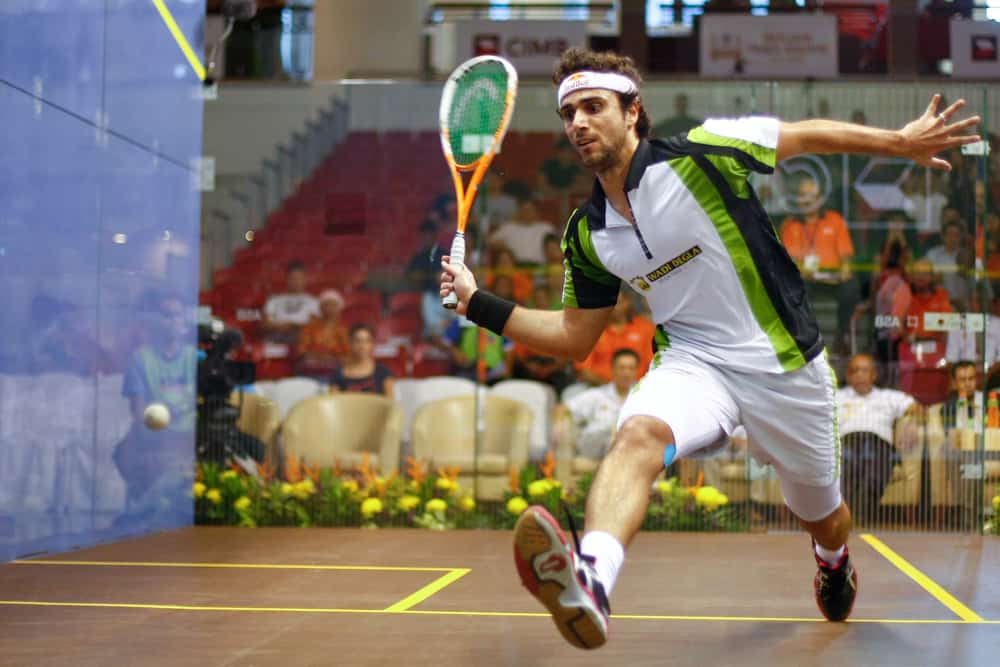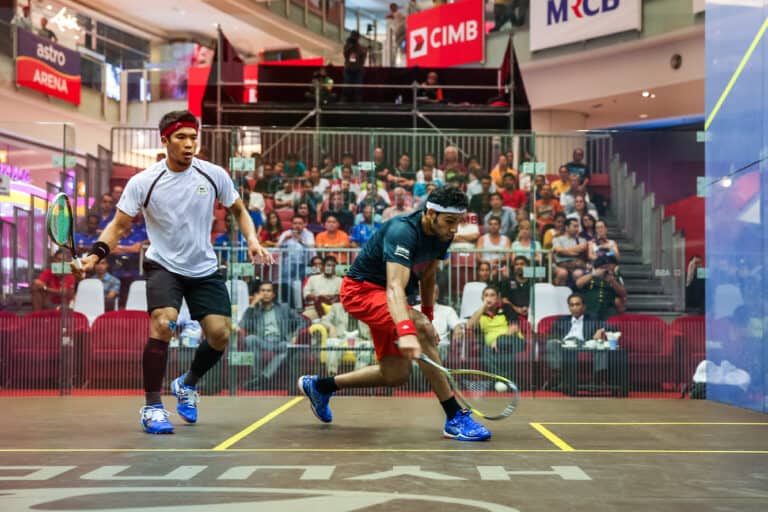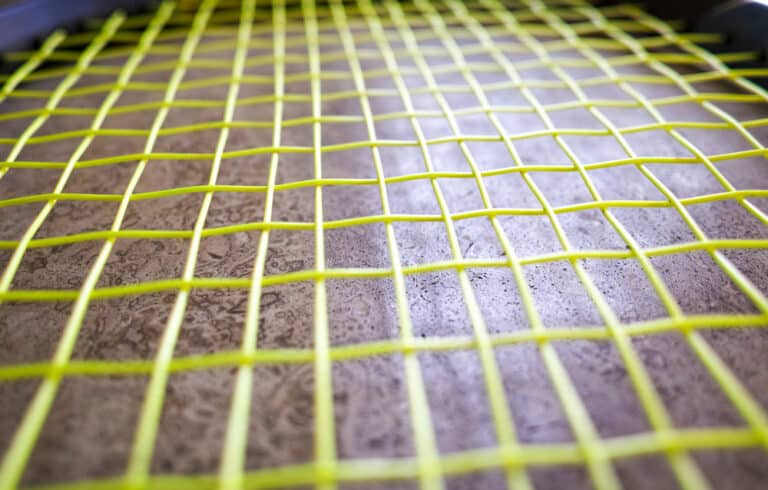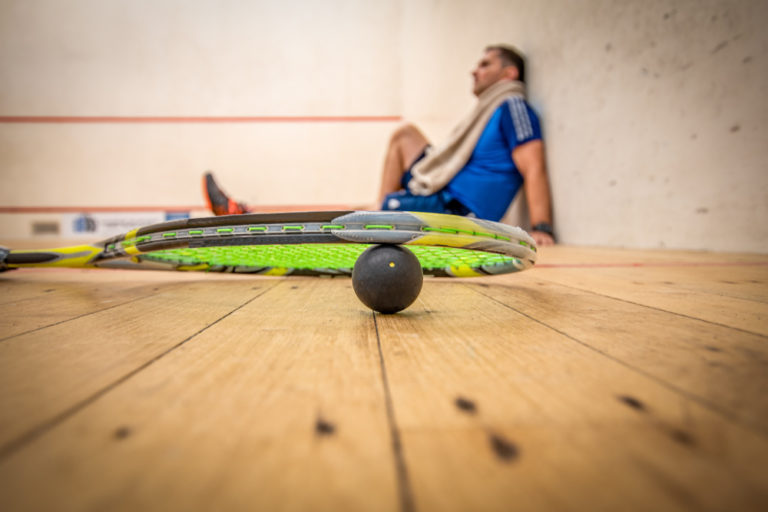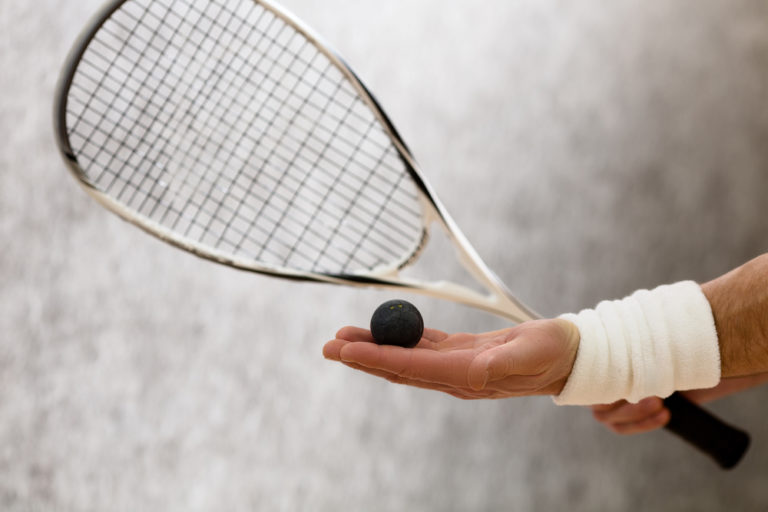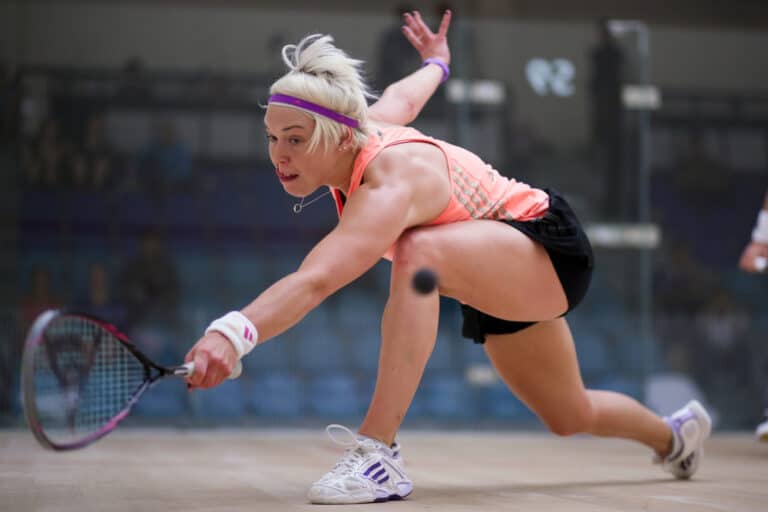What Is The Terminology Used In Squash?
Like most sports and games, the notoriously fast-paced indoor racquet sport Squash has an extensive vocabulary of its own jargon. The Squash-specific terms and phrases below are organized into topics and themes. For some, we also offer examples of their usage within a sentence, giving you an idea of the term’s context.
Squash slang is a kind of shorthand to describe standard plays, game situations, rules, concepts, equipment, or areas of the court. Some squash terms may be familiar to players of other sports but may have a distinctive meaning in the context of Squash. Others are unique to Squash.
Terms like “crosscourt,” “hot ball,” and “foot fault” can be confusing at first, and you might not know your drops from your drives, your nicks from your lobs, and your boasts from your kills just yet. But don’t sweat because, in this definitive guide to Squash-talk, we’ll decipher the most common Squash court jargon and some more obscure Squash banter.
Different Types Of Squash Terminology
Although Squash shares some terminology with other racquet sports, many of the terms below are unique to the game of Squash. Some words are concrete items, or court areas, while others describe plays, rules, game phases, or concepts.
Most Frequently Used Squash Terms
Here is some common jargon you’ll encounter on squash courts daily across the globe. As a new player, you’ll want to come to grips with these key terms early on in your Squash journey.
- Hot Ball: A ball that has already warmed up from friction during a game. Hot balls bounce far more than their cold counterparts. Also, see our explanation of different ball types below.
“After half an hour of rigorous play, it was a hot ball!”
- Foot Fault: Fault called by the referee when the serving player’s feet both leave the service box during service. At least one foot must remain within the service box (not touching the lines) throughout the service.
“Johnson committed more foot faults than his opponent during the match.”
- Stroke: When awarded by a referee following an obstruction, a stroke results in the obstructed player winning a rally. The rally is not replayed, and the player wins a point.
“After an interference from Harris, the referee awarded a stroke to Mustafa.”
- Tight: A shot struck very close to either side wall.
“A series of aggressive tights saw Sara win the rally.”
- Let: A replay of the current point, called by the referee after an appeal.
“The referee called ‘let’, and the players readied themselves for the serve.”
- Interference: A fault resulting from intentional interference or obstruction of one player by another to gain a strategic advantage.
“Gamal was blocking her opponent after her shot, so a stroke was awarded in her opponent’s favor.”
- Appeal: A call by either player to the referee, petitioning for a let or a stroke. A player says, “Appeal please,” after an alleged interference or obstruction by the other player to call for an appeal.
“Jonty asked for an appeal because Taylor had stepped right in front of him after serving, and he couldn’t safely hit his shot.”
Squash Shots, Balls, Strokes, And Plays
Perhaps the most crucial Squash terminology is the vibrant parlance around the plays, shots, and game situations unique to the beautifully torturous game of Squash.
- Boast: A shot to the corner, which bounces off the sidewall right before hitting the front wall.
“There was no way Mark could reach Harvey’s boast.”
- Carry: A shot in which the ball drags along the racquet strings rather than bouncing straight off. Similar to a double-hit.
“Marvin’s carry fell below the tin line, and he lost the point.”
- Cross court: A powerful shot that reaches the opposite back quarter of the court after bouncing off the front wall.
“Noa’s daring cross courts kept her opponent on her toes.”
- Drop: A shorter shot played with restraint, where the ball bounces only just above the tin.
“Julia’s sneaky drop left Emily no choice but to dash to the front of the court.”
- Drive: A common horizontal stroke, much like a volley, usually powerful and intended to give great distance.
“Jimi’s shots often fell short, so he decided to train more, paying special attention to his drives.”
- Kill: A decisive, powerful shot that wins a point for a player.
“That kill was insane!”
- Get: A daring, agile, or improbable retrieval of a particularly challenging shot.
“Nice get! I thought for sure I’d win that one.”
- Lob: An unlikely ball that bounces high off the front wall.
“Evans responded to the lob with a strong groundstroke.”
- Nick: A hard-to-reach ball that lands right at the edge of the court.
“If he nicks it, it’s game over.”
The Scoring Systems Used In Squash
Some terminology in Squash refers to different scoring systems, game types, or styles.
What Is American Scoring In Squash?
The most common scoring system and tournament standard, in which both server and receiver have the chance to earn the point during each rally.
What Is International Scoring In Squash?
A lesser-used alternative system, in which only the server can receive points.
Squash Ball types
You may have heard players refer to various types of balls or noticed the little colored dots on the balls and wondered what they mean. Here’s what they’re called and what the difference is.
- Intro balls are 12% larger than pro and competition balls and are generally marked with a blue dot. Intro balls have the highest bounce, but they might be too easy for anyone except absolute beginners.
- Progress balls are marked with a red dot, are slightly bigger than Competition balls, and have significantly higher bounce.
- Competition balls are small, the same size as pro balls, but usually marked with a single yellow dot. Competition balls bounce slightly more than Pro balls.
- Pro balls are small, usually marked with two yellow dots. Pro balls have the lowest bounce. The added challenge helps advanced players build speed, strength, and vigor.

Squash Court Areas And Markings
Some of the most common squash terms refer to the court areas, usually demarcated by white lines.
| Term | Meaning |
| Quarter Court | Half of the back side of the court. The court is cut in two by the short line, and the back half is divided by the half-court line. |
| Service box | A smaller square within each quarter. This is where players stand to serve. |
| The Tin | A horizontal boundary line that runs low across the entire front wall. The ball must bounce above the tin when it hits the front wall. |
| The T | This is the central area of the court, close to where the short line and the half-court line converge to form a T shape. The T tends to be a strategically beneficial area, and players fight to control it. |
Conclusion
Squash is a fast-paced high-calorie-burn sport, and a good grasp of its most crucial terminology will stand you in good stead as you zoom around the court. Add these terms to your courtside arsenal of sporty repartee to get into the groove of the game.
References
- https://www.liveabout.com/definitions-for-common-squash-terms-2835406
- https://www.englishclub.com/vocabulary/sports-squash.htm#vocab
- https://www.myactivesg.com/sports/squash/how-to-play/squash-for-beginners/terms-used-in-squash
- https://en.wikipedia.org/wiki/Squash_(sport)
- https://www.squashpoint.com/blogs/blog/how-to-choose-the-right-squash-ball/

